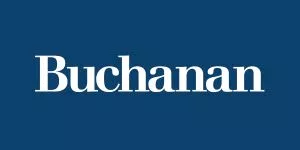- within Consumer Protection topic(s)
- with Inhouse Counsel
- with readers working within the Advertising & Public Relations and Basic Industries industries
Arecent decision by an Ohio court marks a significant development in the evolving landscape of name, image, and likeness (NIL) rights. On October 18, 2025, a Franklin County judge issued a temporary restraining order (TRO) preventing the Ohio High School Athletic Association (OHSAA) from enforcing its prohibition against high school athletes profiting from their NIL. High school football player Jamier Brown, the plaintiff in Brown v. OHSAA, filed a lawsuit earlier this month challenging the association's NIL ban under antitrust and state law principles.
The court's ruling temporarily aligns Ohio with 44 other states that already permit high school athletes to engage in NIL activities. As a result, Ohio high school athletes can now enter into NIL agreements immediately without risking their eligibility while the case proceeds.
Brown, a high school junior, is the top wide receiver prospect in the 2027 recruiting class and has committed to play at Ohio State. Because he is still a minor, Brown's mother initiated the action on his behalf. The complaint claims that Brown has lost more than $100,000 in potential NIL deals because of the OHSAA's ban, asserting that the association's restriction unlawfully limits athletes' ability to participate in a legitimate marketplace for their publicity rights ("publicity rights" generally mean the rights of an individual to control the commercial exploitation of their name, image, likeness, persona, etc.). In response, the OHSAA maintains that its ban aims to preserve amateur competition and prevent improper inducements.
While the court did not make a final ruling, it found that Brown had established a substantial likelihood of success on the merits, such as would justify a temporary halt to enforcement. The TRO remains in effect as the underlying claims continue to be litigated, granting Brown and other high school athletes at OHSAA member institutions the ability to enter NIL agreements during the pendency of the case.
This development follows the House v. NCAA settlement, which reshaped NIL rights in college sports. That settlement effectively ended the NCAA's strict amateurism model and established a new framework for revenue sharing with college athletes. Following a string of victories by NCAA athletes seeking additional eligibility to pursue NIL at the college level, the Ohio state court ruling demonstrates the steady expansion of NIL issues and their impact on high school athletics.
The Brown decision also puts pressure on the few remaining states, including Michigan, Indiana, Alabama, Mississippi, and Wyoming, that still restrict high school NIL opportunities. Each state operates under its own athletic association, and their respective rules vary widely. And, in the absence of comprehensive federal legislation that establishes a uniform set of rules applying to all states, each state is free to regulate NIL for high school and college athletes accordingly. However, with Ohio apparently on its way to joining the majority, the national trend favors expanding NIL access at all levels of competition.
Brown's case against the OHSAA will now proceed to a hearing on a permanent injunction, where the court will determine whether the association's NIL restrictions violate Ohio or federal law. A ruling against the association could influence how other state athletic organizations craft their policies. Whether or not Brown ultimately prevails on the merits, other states with similar restrictions are likely to face similar legal challenges.
From a legal perspective, the Ohio ruling highlights the tension between maintaining amateur athletic standards and complying with modern antitrust principles. Courts have consistently scrutinized rules that prohibit athlete compensation, especially when those rules lack a narrowly tailored justification. Although state athletic associations differ from the NCAA, both serve as regulatory bodies whose rules significantly impact athletes and third-party businesses seeking endorsement and other commercialization opportunities. However, Brown's status as a minor provides an interesting wrinkle in this case, with the OHSAA almost certain to raise a host of policy arguments, including issues under state, labor law and other applicable restrictions for residents under the age of 18.
With the continued expansion of NIL, the line between education-based athletics and commercial opportunities will remain an active area of litigation and policy development. The Ohio case serves as a reminder that NIL issues are no longer confined to universities or the NCAA—they are increasingly shaping the future of amateur sports nationwide at every level. For institutions, sponsors, and collectives operating across multiple states, these developments underscore the increasing complexity of NIL compliance. Each jurisdiction may interpret NIL rights differently, and rules once clear at the college level now face challenges in high school settings. Athletic associations and individual schools will likely need to review and update their NIL policies to ensure they remain compliant and defensible under evolving legal standards.
As this case continues to develop, Buchanan offers a comprehensive suite of services, providing guidance tailored to institutions, collectives, and businesses involved in the NIL space and other activities related to student athletes to ensure compliance and support at every stage.
The content of this article is intended to provide a general guide to the subject matter. Specialist advice should be sought about your specific circumstances.




